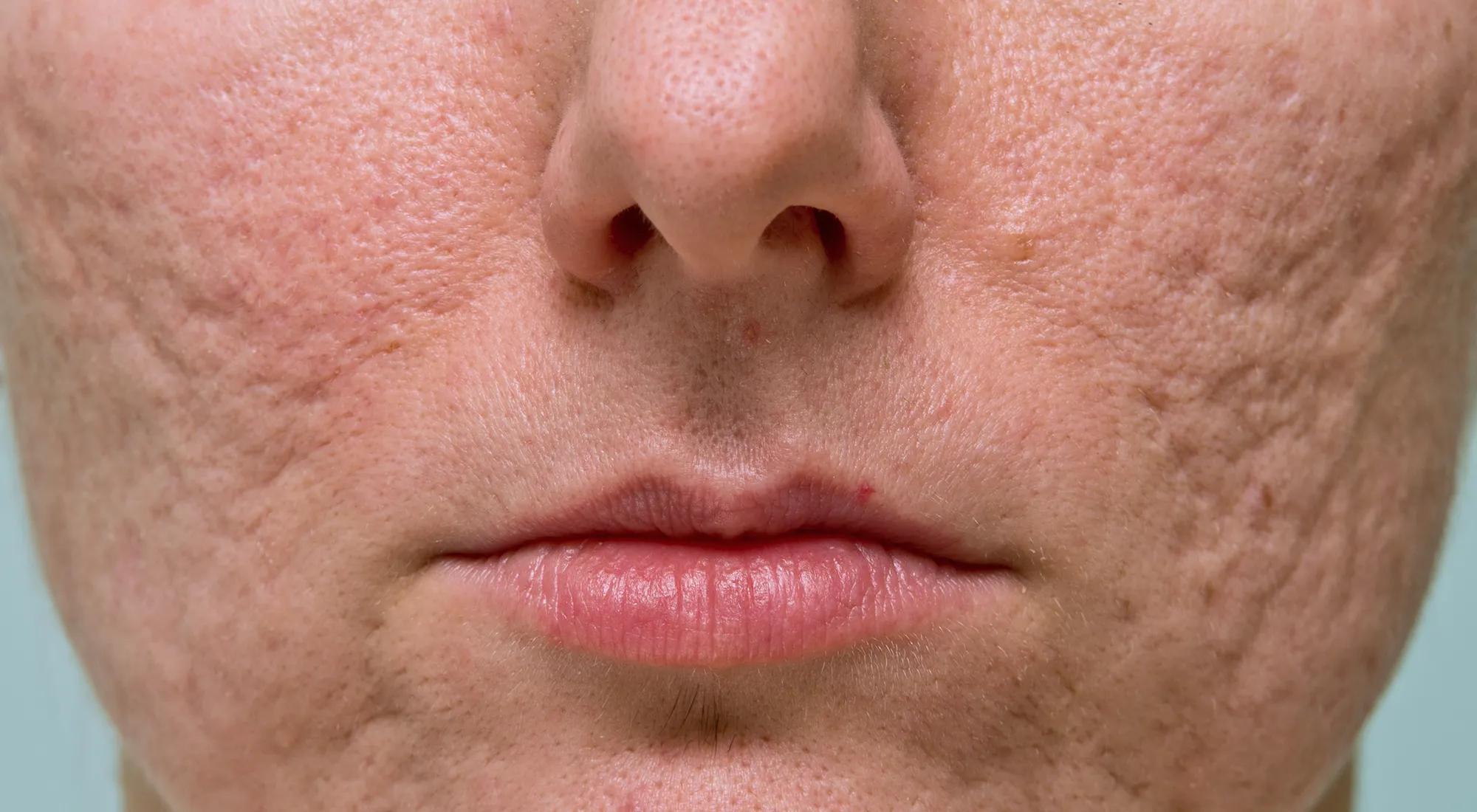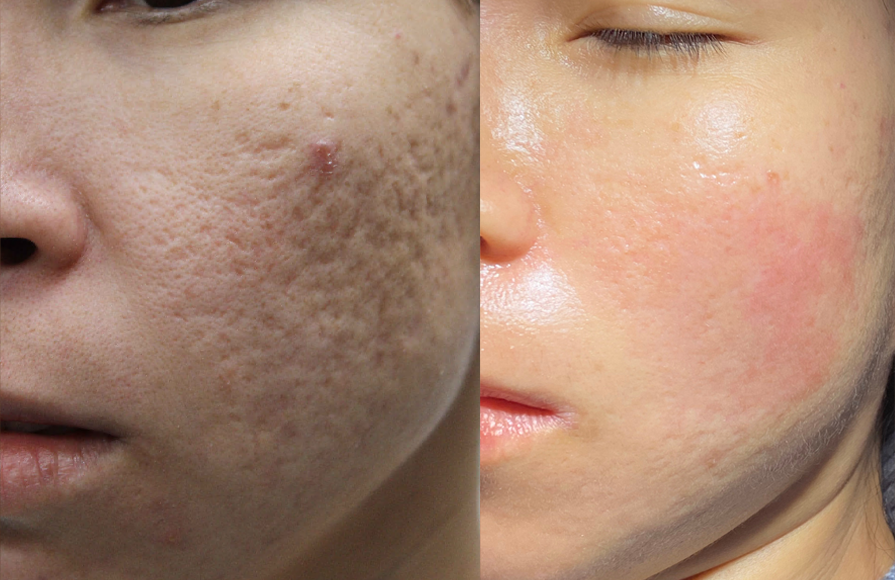Advanced Acne and Acne Scars Treatment: Bid Farewell to Acnes
Advanced Acne and Acne Scars Treatment: Bid Farewell to Acnes
Blog Article
Comprehending the Various Skin Disease and Efficient Therapy Options for Acne Marks
Acne scars represent a complex interaction of skin problems that dramatically effect individuals' self-esteem and general skin health. Recognizing the unique sorts of acne marks-- hypertrophic and atrophic-- together with their underlying causes, is crucial for establishing efficient treatment strategies. Numerous restorative choices exist, varying from innovative dermatological procedures to natural solutions. Nonetheless, the efficiency of these treatments commonly hinges on customized analyses by certified experts. As we discover the landscape of acne scar management, it comes to be apparent that the trip toward more clear skin might entail more than just topical services.
Kinds Of Acne Scars
The two main classifications of acne scars are atrophic and hypertrophic marks. These marks are more categorized into 3 subtypes: ice pick marks, which are deep and slim; boxcar scars, which are broader and have well-defined edges; and rolling marks, which develop a wave-like look due to uneven skin texture.
In comparison, hypertrophic marks arise from an overproduction of collagen throughout the recovery procedure, bring about raised areas on the skin. These scars are typically solid and can differ in color, often showing up red or darker than the bordering skin.

Root Causes Of Acne Scarring
Marking occurs as a result of the body's all-natural recovery feedback to swelling and injury triggered by acne lesions. When acne forms, it causes an inflammatory feedback, bring about the release of different cytokines and development aspects that promote recovery. Nevertheless, this procedure can often result in extreme cells development or inadequate fixing, resulting in scars.
The primary sources of acne scarring include the seriousness of the acne itself, duration of the sores, and individual skin types. Extreme inflammatory acne, such as nodules and cysts, is much more most likely to result in scarring because of much deeper tissue damage. In addition, improper handling of acne lesions, such as squeezing or picking, can exacerbate cells injury and inflammation, enhancing the chance of scarring.
Hereditary tendency likewise plays a considerable function; individuals with a family members background of scarring go to a higher danger. Skin kind and shade can influence mark formation, as darker skin tones might experience post-inflammatory hyperpigmentation, while lighter skin might establish atrophic scars.

Treatment Alternatives for Scarring
Reliable therapy alternatives for acne scarring vary relying on the kind and intensity of the marks. Generally classified into atrophic, hypertrophic, and keloid marks, these conditions call for tailored approaches for optimal results.
For atrophic scars, which are identified by a loss of tissue, therapies such as chemical peels, microdermabrasion, and laser treatment are typically employed. These methods advertise skin renewal and boost collagen production, therefore more tips here enhancing skin appearance. Subcision, a minimally intrusive treatment, can additionally be reliable by damaging up fibrous bands underneath the skin.
Hypertrophic and keloid scars can be more challenging to treat. Choices consist of corticosteroid injections to reduce inflammation and squash the marks. acne scars. In some situations, cryotherapy or laser therapy may be recommended to decrease their look
Surgical options are offered for severe scarring, where excision or skin grafting may be essential. It's important for people to talk to a skin doctor to examine their details scar type and go over the most suitable therapy strategy. Combining several treatments often yields the finest outcomes, ensuring that each client's one-of-a-kind skin problem is addressed effectively.
Natural Remedy and Natural Solutions
All-natural solutions and natural home remedy can offer an easily accessible strategy for people seeking to enhance the look of acne marks. Numerous active ingredients located in the home kitchen have shown prospective advantages in improving skin appearance and advertising healing.
One preferred remedy is aloe vera, known for its anti-inflammatory and comforting homes. Using fresh aloe vera gel directly onto the scars can help improve skin hydration and minimize inflammation. Similarly, honey has natural antibacterial and moisturizing high qualities that can assist in mark recovery. It can be utilized as a mask, left on for thirty minutes prior to rinsing.
Another reliable choice is lemon juice, which functions as a natural exfoliant and can lighten hyperpigmentation. It needs to be utilized carefully, as it might create photosensitivity. Oat meal masks are also useful; their mild peeling can assist remove dead skin cells while calming irritability.
Important oils, such her explanation as tea tree oil and lavender oil, can additionally support mark healing due to their antimicrobial residential properties. It is crucial to do a patch examination prior to using any type of solution to make certain there are no damaging responses. These all-natural solutions can be a complementary approach in the trip to diminish acne scars.
Protecting Against Future Scarring
Adopting a proactive approach to skincare can considerably lower the risk of establishing future acne marks. Normal cleansing, exfoliation, and hydration can assist keep skin health and wellness and prevent clogged pores.
Furthermore, staying clear of the lure to pick or squeeze acne lesions is important, as this can cause inflammation and succeeding scarring. Rather, individuals should concentrate on using topical therapies that promote healing and minimize swelling. Components such as salicylic acid, benzoyl peroxide, and retinoids are understood for their effectiveness in managing acne and lessening marks.

Finally, keeping a healthy diet rich in antioxidants and remaining moisturized supports skin regeneration. By carrying out these precautionary actions, individuals can substantially reduce their threat of future scarring and promote overall skin wellness.
Conclusion
To conclude, a comprehensive understanding of acne scars, including both atrophic and hypertrophic kinds, is vital for effective treatment techniques. Tailored interventions, consisting of expert therapies and natural home remedy, can substantially boost skin appearance and appearance. Precautionary measures also play a vital function in lessening future scarring. Appointment with a dermatologist continues to be critical to create personalized techniques that consider private skin kinds and scar severity, eventually boosting the efficiency of mark monitoring methods.
Acne scars represent a complicated interaction of skin conditions that considerably influence people' self-confidence and overall skin wellness. The 2 key classifications of acne marks are atrophic and hypertrophic marks. These marks are further categorized right into three subtypes: ice pick scars, which are deep and slim; boxcar marks, which are broader and have well-defined sides; and rolling scars, which develop a wave-like look due to irregular skin appearance.
A detailed assessment with a skin doctor can aid identify the most appropriate treatment, taking into account the person's skin kind, scar severity, and total skin health.
Appointment with a dermatologist remains vital to devise individualized strategies that take into consideration specific skin kinds and scar extent, eventually improving the efficiency anchor of scar management methods.
Report this page